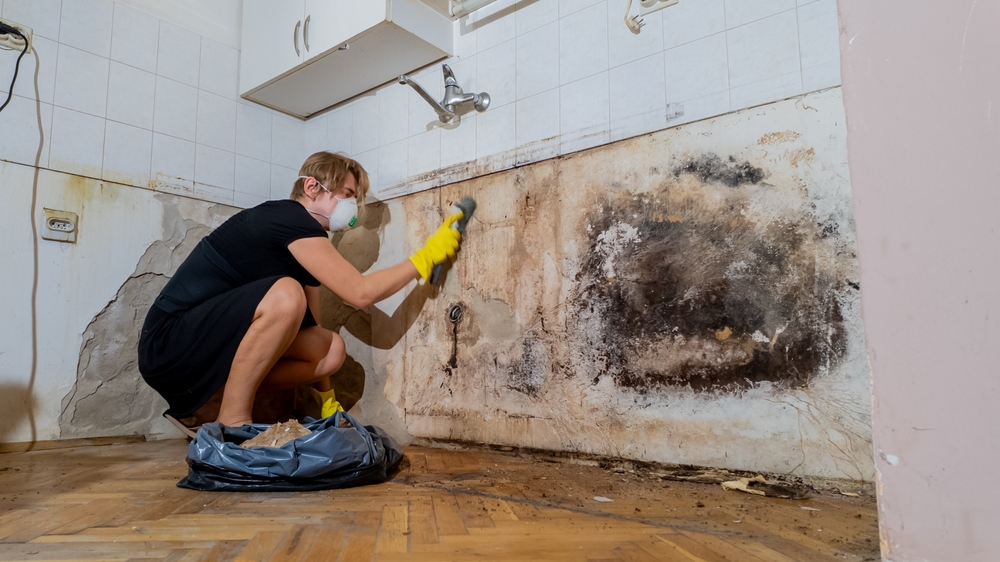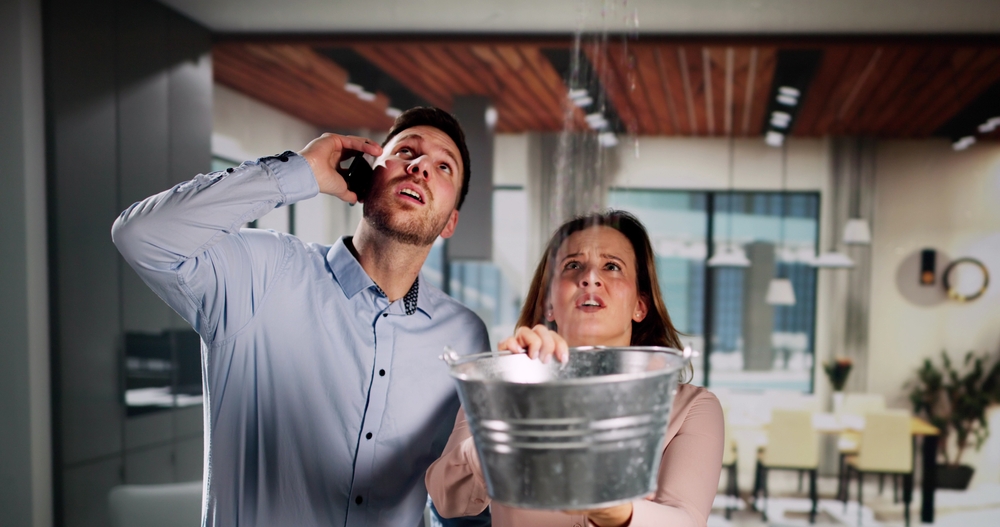Among the most often occurring and damaging problems homeowners can run across is water damage. Whether from a busted pipe, storm, or leaking appliance, water may rapidly flood your house and inflict major damage. Acting quickly will help you reduce possible health hazards including mold development as well as the damage.
This book offers quick, doable actions you should start right away following water damage. Using these guidelines can help you safeguard your house, your health, and your possessions. Let’s explore what to do immediately after water damage.
Water can soak into furniture, carpeting, and walls when it gets inside your house; within hours, the damage may get worse. Minimizing the consequences of water damage calls both immediate action. Your property and health can be preserved with quick procedures include disconnecting the water source, emptying extra water, and summoning professionals.
Step-by-Step Guide: What to Do After Water Damage
1. Assess the Damage
After water damage, first things to do is thoroughly evaluate the circumstances. Safety always comes first, though.
- Safety First: Prioritize Personal Safety and the Safety of Others: Make sure you and everyone else in your house are safe first thing. Electricity and water do not mix particularly nicely. Turn off the power to the impacted areas if there is any possibility of electrical hazards—that is, exposed cables or wet outlets. If it is safe, you could accomplish this by turning off the primary circuit breaker. Call emergency services and leave right away if the water is deep or if the construction of the building is at danger.
- Identify the Source of the Water Damage: Try then to find the water source. Cut off the water supply to any appliance you use if it comes from, say a dishwasher or washing machine. Should it be from a busted pipe, find the main water shut-off valve and turn it off to cease water flow.
- Assess the Extent of the Damage: Once you have considered safety, start to evaluate the water’s extent. Examine all impacted spaces—including flooring, ceilings, walls, and furniture. This will direct the next actions and allow you to grasp the degree of the damage.
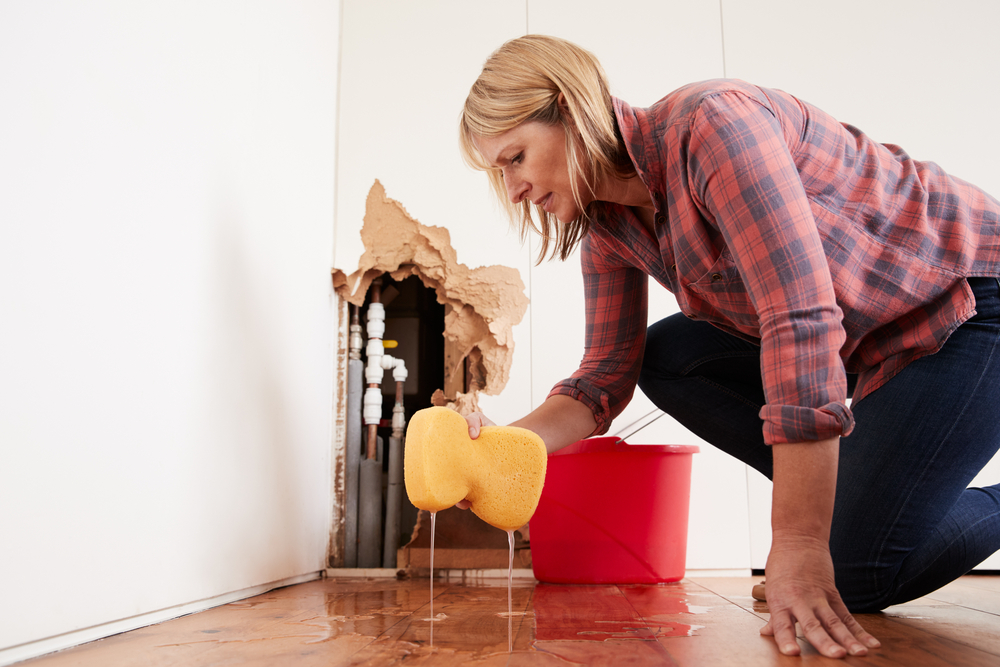
2. Document the Damage
An important first step is recording the damage, particularly if you intend to make an insurance claim subsequently.
- Take Photos and Videos of the Affected Areas: Get clear, high-quality pictures and videos of the water damage with your phone or camera. Capture all impacted areas—including floors, walls, furniture, and any other item. To demonstrate the degree of the damage, be careful to capture wide-angle views.
- Document the Damage with Detailed Notes: Along with pictures, document in writing what was damaged, how much of it is impacted, and any instantaneous repairs you did. Insurance adjusters will be able to evaluate damage and decide on coverage amount using this material.
3. Mitigate the Damage
It’s time to act to stop the water damage from getting worse once you’ve evaluated and recorded it.
- Turn Off Water Sources if Possible: Top the water flow whether a leaky pipe, appliance, or roof causes the water damage. Turning off the main water supply or the water supply of the particular appliance will help you to accomplish this.
- Remove Excess Water Using Towels, Mops, or Wet-Vacuums: Start then by beginning to eliminate as much water as you can. Soak extra water from floor, furniture, and other impacted surfaces using towels, mops, or a wet-vacuum. Removing the water quickly reduces the time it has to seep into materials like drywall or wood, therefore aggravating the damage.
- Remove Water-Damaged Materials Like Carpets, Furniture, and Drywall: Water can destroy furniture, carpets, and rugs fast. Try to pull them from the impacted region if they have been very saturated. Move them outside to dry if at all feasible, or set them on a raised surface. Given their propensity to mold development, you might also have to remove drywall, insulation, and baseboards that have absorbed water.
4. Prevent Mold Growth
After water damage, mold growth ranks among the main worries. In humid surroundings, mold might start to grow 24 to 48 hours later. A first concern in your cleanup should be preventing mold.
- Dry the Affected Areas as Quickly as Possible: Mold grows from moisture, hence it is imperative to promptly dry off the impacted sections. Use fans, dehumidifiers, or air conditioners—should you have them—to aid hasten the drying process by lowering air moisture.
- Use Dehumidifiers and Fans to Circulate Air: Set up fans and dehumidifiers in impacted rooms. While fans help air to speed up drying, dehumidifiers will eliminate extra moisture from the air. Open windows and doors will help to increase airflow if the weather permits.
- Open Windows and Doors for Ventilation: Open windows and doors to allow fresh air in if it’s safe and practical. In tight areas like bathrooms or basements especially, this helps lower humidity and encourage rapid drying.
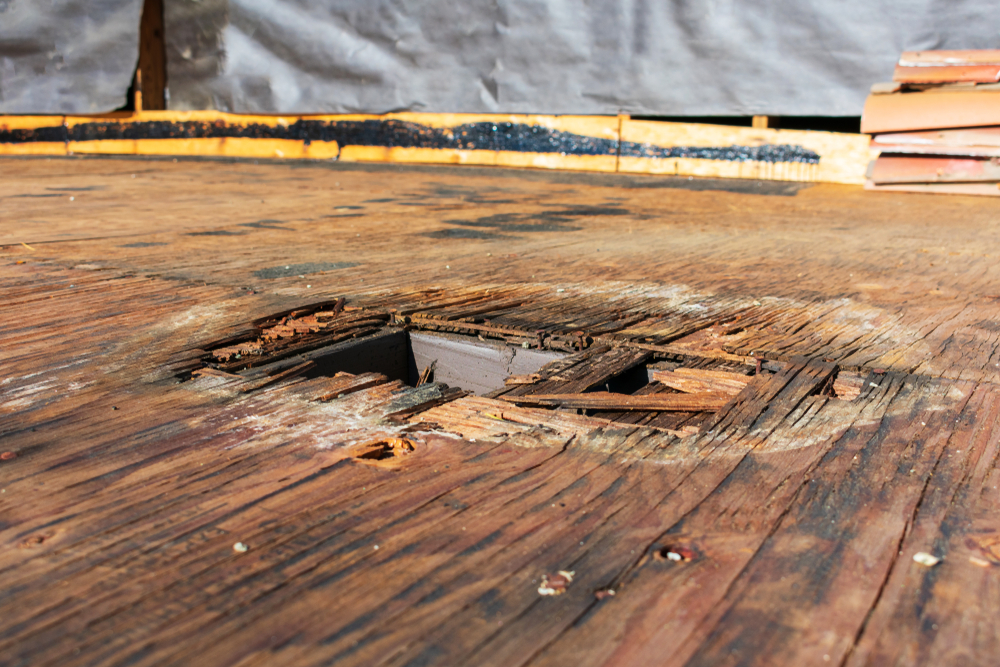
5. Contact Professionals
By now you might be able to manage some of the cleanup on your own, but for complete water damage restoration you should definitely have experts involved.
- Call a Water Damage Restoration Company: A professional in water damage restoration has the knowledge, tools, and experience required to correctly manage water damage events. They can quickly dry your house using industrial-grade equipment, evaluate concealed damage, and remove contaminated items.
- Contact Your Insurance Company to File a Claim: Once you have acted right away, call your insurance carrier to document the damage. Make sure you provide them all the documentation—including notes, pictures, and videos. The process might start sooner the earlier you submit a claim.
Additional Tips
- Health Considerations: Furthermore raising health issues is water damage. While you are dealing the damage and cleansing, you should also be safeguarded.
- Wear Protective Gear Like Gloves, Masks, and Boots: Water damage sometimes introduces into your house germs or mold spores. Put on boots, masks, and rubber gloves to guard against direct water contact and any possible diseases.
- Be Cautious of Potential Health Hazards Like Mold and Bacteria: In damp environments, mold can start to proliferate rapidly; standing water can also host germs. Should you detect a musty smell or observe mold growth, you should act right away to eliminate it or call a professional mold treatment company.
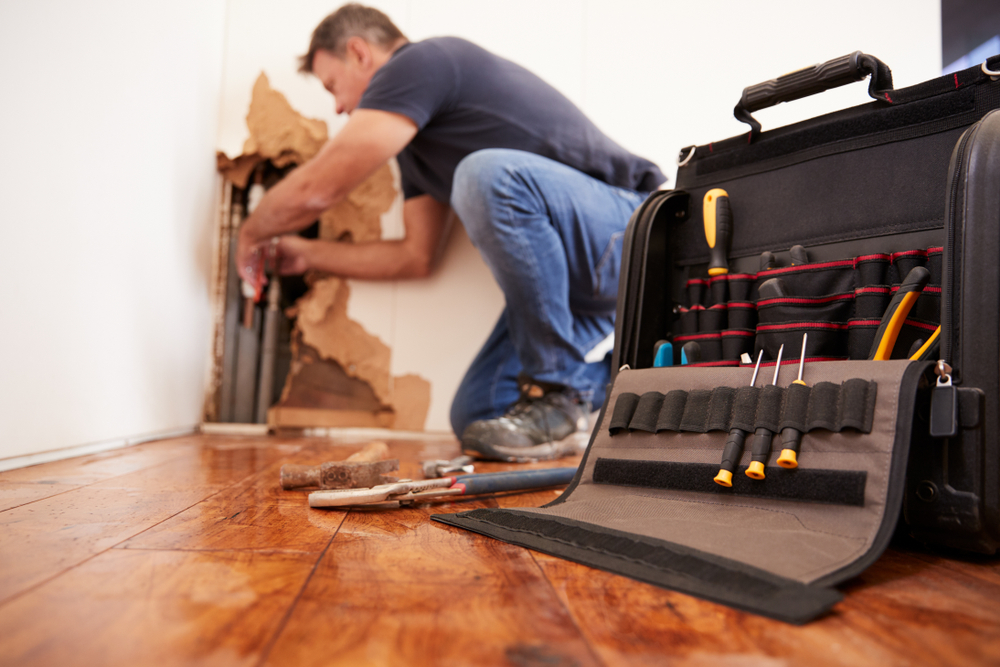
Prevent Future Water Damage
Dealing with water damage is one thing; another is making sure it doesn’t recur.
- Regularly Inspect Plumbing and Appliances: Regular maintenance on your appliances, pipes, and plumbing helps to guarantee no leaks. Pay close attention to places like the laundry room, bathroom and kitchen where water damage is rather typical.
- Install Water Sensors and Alarms: In places likely to be damaged by water, think about adding alarms and sensors. Early detection of leakage by these gadgets will notify you to issues before they become major disasters.
- Have a Water Damage Emergency Plan in Place: Make a water damage emergency plan including insurance details, expert contact information, and a detailed step-by-step instruction for what to do should a water crisis arise. Make sure the plan is known to every household member.
Conclusion
Although water damage is a demanding and maybe expensive problem, early response will make all the difference. Following the advice in this book—evaluating the damage, recording everything, reducing the damage, stopping mold growth, and consulting experts—you may reduce the consequences and start the healing process.
Recall that, in case of uncertainty, always contact a qualified water damage restoration business to guarantee correct completion of the work. Save this page for future use and distribute it to others to enable them to be ready should water damage arise.
Being proactive will save you time, money, and many future headaches. Start the correct actions now to save your health and house!
Philadelphia Restoration Services
https://www.google.com/maps?cid=3399342399556699153
+1 267 668 0013
https://philadelphiarestorationservices.com/

